Donna’s Garden Tips for August
go.ncsu.edu/readext?717721
en Español / em Português
El inglés es el idioma de control de esta página. En la medida en que haya algún conflicto entre la traducción al inglés y la traducción, el inglés prevalece.
Al hacer clic en el enlace de traducción se activa un servicio de traducción gratuito para convertir la página al español. Al igual que con cualquier traducción por Internet, la conversión no es sensible al contexto y puede que no traduzca el texto en su significado original. NC State Extension no garantiza la exactitud del texto traducido. Por favor, tenga en cuenta que algunas aplicaciones y/o servicios pueden no funcionar como se espera cuando se traducen.
Português
Inglês é o idioma de controle desta página. Na medida que haja algum conflito entre o texto original em Inglês e a tradução, o Inglês prevalece.
Ao clicar no link de tradução, um serviço gratuito de tradução será ativado para converter a página para o Português. Como em qualquer tradução pela internet, a conversão não é sensivel ao contexto e pode não ocorrer a tradução para o significado orginal. O serviço de Extensão da Carolina do Norte (NC State Extension) não garante a exatidão do texto traduzido. Por favor, observe que algumas funções ou serviços podem não funcionar como esperado após a tradução.
English
English is the controlling language of this page. To the extent there is any conflict between the English text and the translation, English controls.
Clicking on the translation link activates a free translation service to convert the page to Spanish. As with any Internet translation, the conversion is not context-sensitive and may not translate the text to its original meaning. NC State Extension does not guarantee the accuracy of the translated text. Please note that some applications and/or services may not function as expected when translated.
Collapse ▲Treat bothersome yellow jacket nests at dusk if possible. These bad-tempered insects return to the nest in the evening so a more complete kill will take place. Spray with a generic wasp and hornet spray taking care to stand well clear of the nest. Occasionally a second application will be needed.

Yellow Jacket Nest
If you are planning to sow your lawn this fall, kill any weeds that are present at this time. Most herbicides require a waiting period before new seeds can be planted. Read the directions on you weed killer before spraying. Be sure and make note of the temperature guidelines. The effectiveness of most herbicides is determined by the temperature.
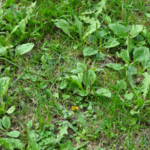
Lawn weeds
If your blueberry bushes are too tall for convenient harvest, now is the time to prune off the tops of your plants. Additional thinning in February can also be beneficial to mature plants.
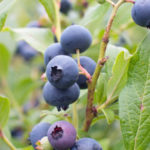
Prune blueberries
Fertilize strawberries during August for next year’s harvest. Apply 1 1/2 lbs. of ammonium nitrate per 100 feet of row. Brush fertilizer from leaves to prevent burn.

Fertilize Strawberries
Get fall transplants such as cabbage, broccoli and brussels sprouts in the ground. Keep them well watered.

Plant Fall Transplants
Watch for large numbers of yellow ring necked caterpillars on blueberry bushes. Although the numbers can be alarming, the damage is minimal. Spray with liquid Sevin or spinosad or prune out the limbs with caterpillars and plunge them into a bucket of soapy water

Yellow Necked Caterpillar
For control of grassy weeds in ornamental shrubs and flowers use a product containing Sethoxydim. This product kills grassy weeds such as wire grass but won’t harm most ornamentals. It can be found as Poast, Ornamec Over the Top, Bonide Grass Beater and Fertilome Over the Top. Read the label for list of ornamentals that it can be used with.
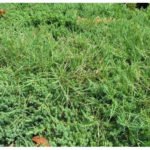
Grassy Weeds
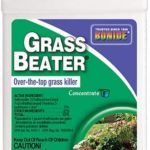
Bonide Grass Beater
Black spot on roses has been pretty bad this summer due to the frequent rain. Keep fallen leaves raked and bagged. This disease can over-winter in leaves that lie on the ground all winter.
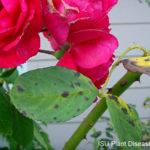
Blackspot on Roses
Frequent rainfall make regular mowing difficult. But, don’t wait too long to mow. The taller the grass gets, the more difficult the job becomes. When mowing tall grass you have two options: Set the blade high and mow more than once or attach a bagger and bag the tall clippings.

Mowing Tall Grass
Refrain from working in the garden when foliage is wet. You can inadvertently spread diseases from one plant to the other in the water on your hands and clothing.

Wet Garden
Continue to harvest vegetables regularly. This insures continued production of your crops.

Harvest Regularly
Check mature tomato plants frequently for tomato hornworms. They’re difficult to spot but eaten leaves and excrement are pretty obvious. Pick off and kill unless they have been parasitized. Parasitized hornworms are beneficial and quit eating once they have been parasitized.
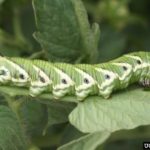
Hornworm
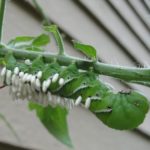
Parasitized Hornworm
Continue to water and fertilize squash and cucumbers and they will continue to produce through the fall.
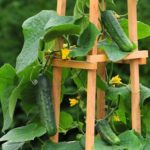
Cucumbers
Trim leggy petunias and impatiens and then give them some liquid fertilizer such as Miracle Gro. They’ll look fresh and new in a couple of weeks.
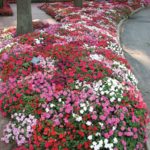
Impatiens
Refrain from mowing grass during dry spells. A little height on the lawn shades grass crowns during very hot and dry periods, preventing sunburn.

Mowing
Clean up fallen fruit from underneath fruit trees and grapevines. Many diseases and insects overwinter in dropped fruit.

Clean up Fallen Fruit




